9 Effective Strategies to Bridge the Frontline Connection Gap and Create a Successful Organization
-2.jpg)
- Understand the Frontline Connection Gap
- Develop a Communication Plan
- Make Your Frontline Employees Feel Valued
- Invest in Training and Development
- Utilize Technology to Make Communication Easier
- Measure and Track Progress of Frontline Connection Gap
- Diversity, Equity, and Inclusion
- Employee Well-Being and Mental Health
- Alignment of Goals and Objectives


 Cut onboarding time
by 60%—here's the
Ultimate Checklist
that helped do it.
Cut onboarding time
by 60%—here's the
Ultimate Checklist
that helped do it.

In today’s competitive business environment, it’s essential to have strong communication engagement between your organization and its frontline workers. The "communication gaps" refer to the disconnect between front-line employees and upper management in an organization. These gaps can occur due to a lack of internal communications, resources, or understanding between the two groups, leading to a disconnect in priorities and goals.
Bridging these gaps is often seen as crucial for improving organizational performance, boosting employee morale, customer satisfaction, and ultimately, the success of the business and worker satisfaction too. Here are some effective strategies you can use to bridge these gaps and ensure a more cohesive and productive working relationship between the two. From developing a communication plan to providing regular feedback, these strategies will help you address the frontline connection gap in your organization and ensure that your frontline employees are engaged and productive.
Understand the Frontline Connection Gap 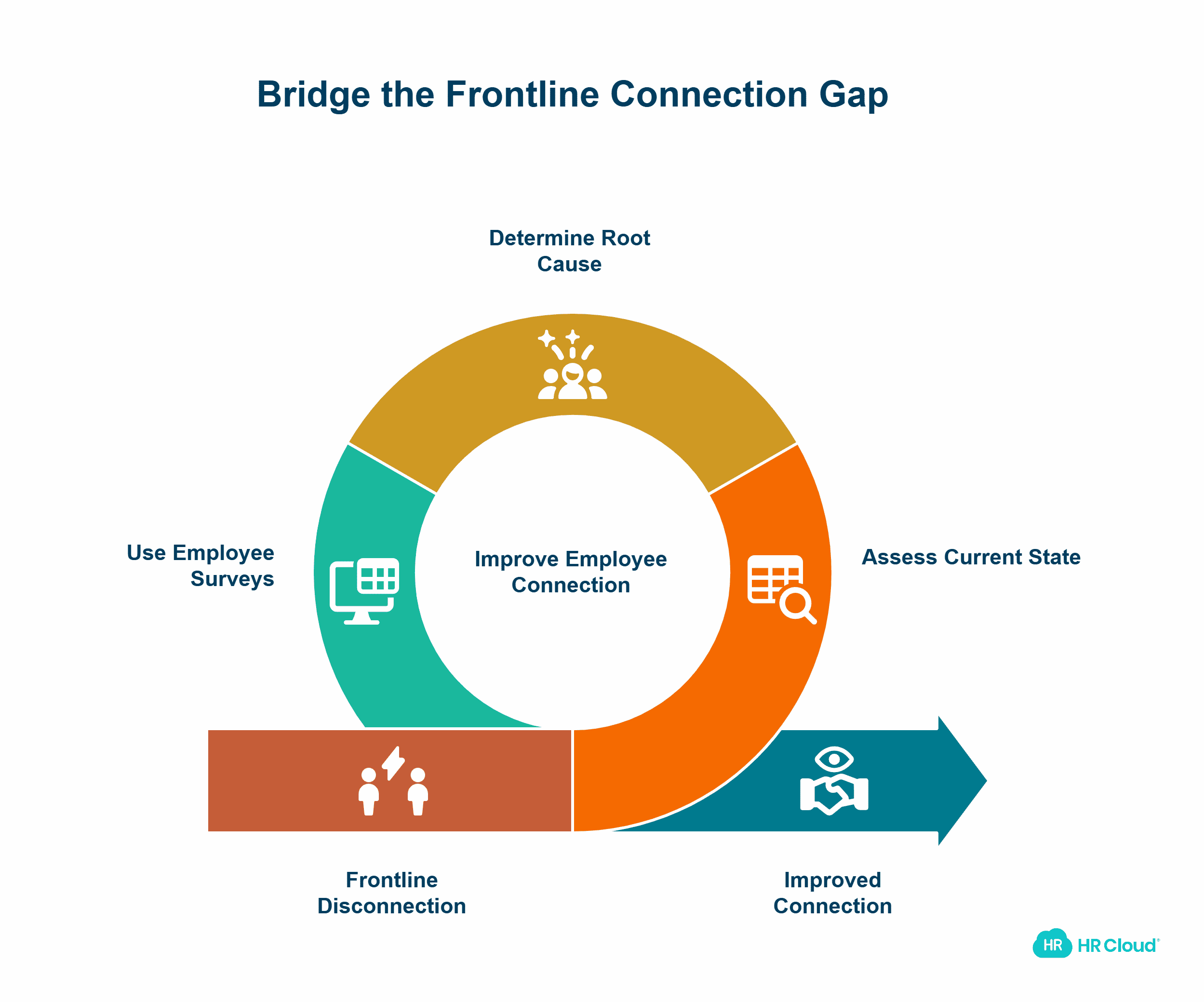
Before you begin any strategy to bridge the communication gaps between your organization and your frontline workers, you should first understand the extent of the gaps and the factors that contribute to them. To do this, it’s important to assess your current state, evaluate where you are relative to your competitors, and identify where you want to be.
Determine the root cause of the disconnect between the front-line staff and upper management. This can be done through employee engagement surveys, focus groups, or other methods of employee listening. This will help you determine where to begin your strategy. Next, you need to assess your connection with your team, including their current engagement levels, common engagement habits, and level of satisfaction. By understanding these factors, you can better align employee engagement communications strategies with improving your connection with your staff. One of the ways you can do this is through Workmates employee surveys and analytics. It makes it easier for you to find out everything you need to know to make a plan for frontline employee engagement.
Develop a Communication Plan
When it comes to connecting with frontline workers, no strategy is more important than communication engagement. It’s the only way they will feel valued and understand the intentions of their frontline managers, leaders, and executives. When communicating with your workers, you need to be transparent, develop mutual trust, and listen to the things they want and need from their jobs.
-
Establish clear and specific goals for improving internal communications and reducing the frontline connection gap. This should be done in collaboration with both front-line laborers and upper management.
-
Determine the communication channels, such as email, regular meetings, or video conferencing, taking into account the needs and preferences of both front-line employees and upper management. Consider implementing an employee experience platform for mobile communication to enhance accessibility.
-
Encourage frontline employees to provide feedback and suggestions for improving engagement communication and reducing the gaps. This can be done through suggestion boxes, employee engagement surveys, or other methods of two-way communication.
-
Encourage a company culture of open and transparent communication throughout the organization, where both front-line employees and upper management feel comfortable sharing their thoughts, ideas, and concerns.
These strategies can help you develop a communication plan that not only addresses the communication gaps but also increases employee engagement and worker satisfaction. Workmates can offer you authentic, conversational, and simple internal comms to improve employee engagement communications. That includes two-way communication, a company hub, chat, and an employee directory.
Make Your Frontline Employees Feel Valued
Although it’s important to develop a communication plan, it’s even more important to value the contributions of your team and recognize employees. The more they feel valued, they’re more likely to be engaged in their work, and overall, feel more satisfied in their jobs, boosting employee experience. There are three ways to feel valued as a frontline employee.
First, you should make sure your workers are aware of the company’s vision, strategy, and goals. This will increase their level of engagement because they’ll be more likely to feel like they’re contributing to the company’s success. Next, you need to ensure that they feel like their ideas are valued. By doing this, they realize that they have a voice in the company’s success. Finally, your employees should feel like they have a say in the company’s direction. This will increase their level of engagement because they will feel confident about having a say in the company's success. With high engagement, it is easier to accomplish a workplace culture where everyone feels recognized. A great way to do this is with peer-to-peer recognition software. Find out more details about what our recognition and rewards system can do for you.
Invest in Training and Development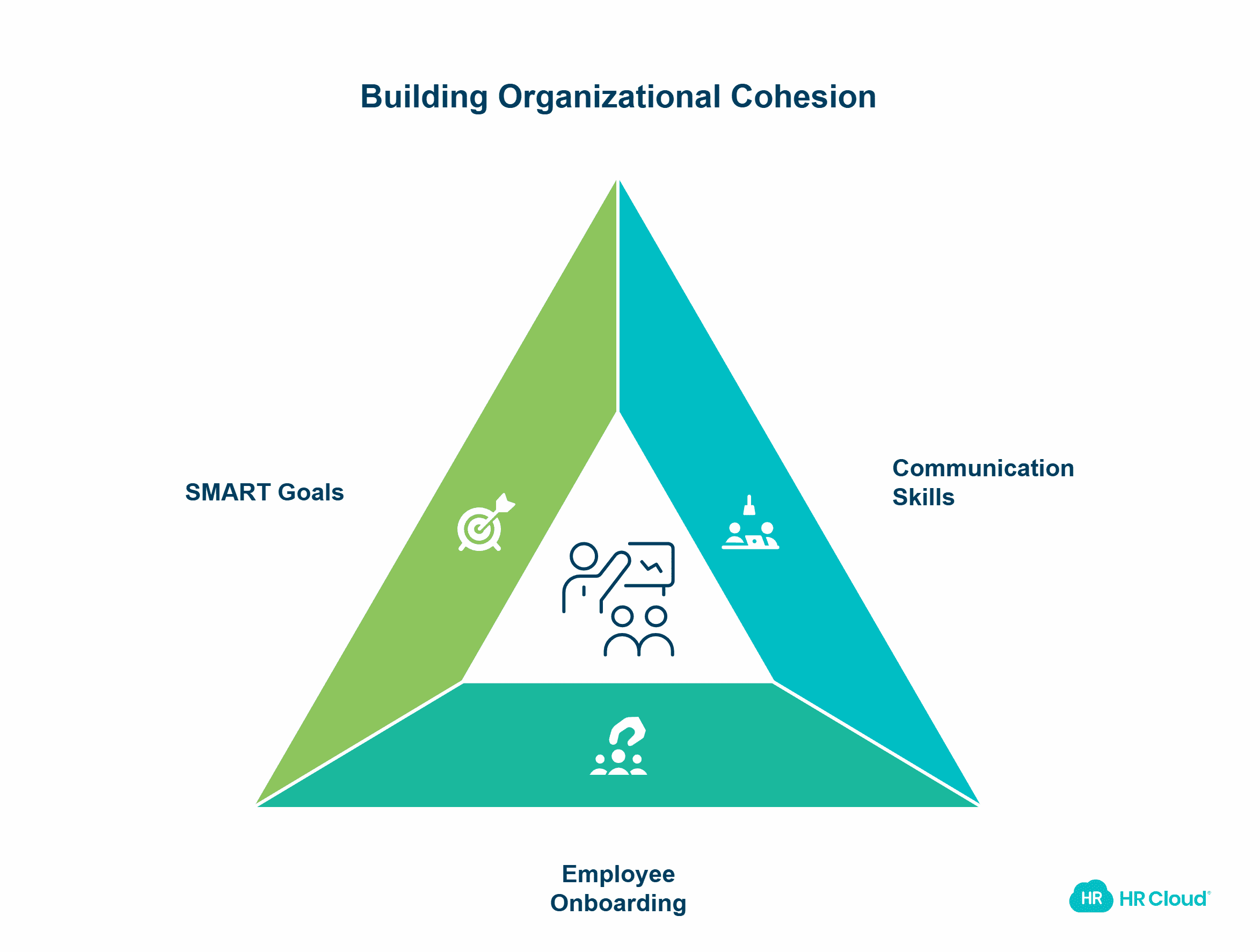
Although communication is critical to bridging the communication gaps between your organization and your frontline staff, it’s not enough. You also want to make sure your employees are trained on how to communicate effectively with customers and with each other.
You should invest in training and development, which is one of the most effective ways to create a more cohesive, productive connection between your employees and your organization. When you invest in staff training and development, including employee onboarding, you’re helping your employees learn new skills that will make them more effective, efficient, and satisfied in their jobs. This will also serve to enhance their communication skills and different forms of communication like written communication and verbal communication through planned learning and development programs for all the team members. Setting SMART goals is crucial for the effective training and development of employees because it provides a clear framework for defining, monitoring, and evaluating progress toward achieving specific objectives. Smart goal acronyms are Specific, Measurable, Achievable, Relevant, and Time-bound.
Utilize Technology to Make Communication Easier
In order to bridge the communication gaps between your organization and your frontline workers, communication technology can be one of the most effective strategies. When using technology to bridge the communication gaps, you want to make sure you’re using strategies that will be useful, and relevant, and create a sense of connection in the digital workplace.
You can utilize technology to improve communication between employees and managers by using programs like Google Hangouts, Zoom, or an automated message service. This will make communication easier between an employee and the management and facilitate a smooth communication flow that can bring every worker on board. To keep them on track with what is happening in the company - Workmates has a newsfeed with which you can make company announcements everyone will see. Consider implementing an employee experience platform or a company intranet to further enhance internal communications and increase leadership visibility.
Measure and Track the Progress of Frontline Communication Gaps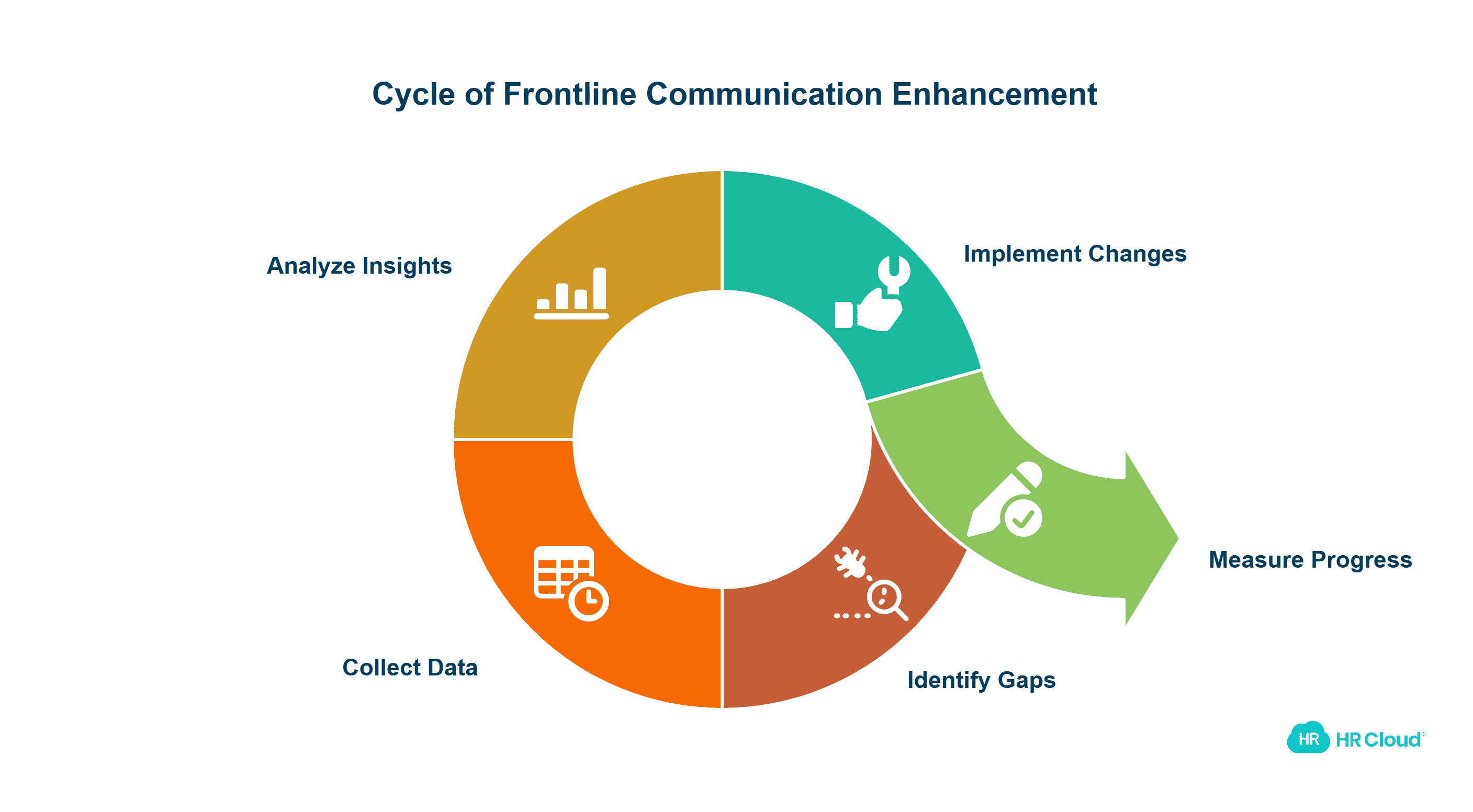
If you want to create a more cohesive and productive connection between your organization and your frontline workers, you need to measure and track the progress of your communication gaps. This can help to identify areas of opportunity, areas of potential improvement, and areas of connection that are missing.
By doing this, you can make adjustments and improvements that will help bridge the communication gaps, ensuring a more connected organization. When measuring and tracking the progress of the communication gaps, you should capture the right data at the right time. To do this, you need to capture data at different points throughout the day, including during the day, at night, and during off hours, like over the weekend or on holidays. You can use technology to do this and gain reliable and actionable insights to implement your action plan to address the frontline communication gaps and achieve employee satisfaction. It can be hard to find the time to do the surveys the right way. The Workmates platform from HR Cloud makes it incredibly simple to design and distribute staff surveys, pulse surveys, and polls in order to get real-time input and advance the business.
Diversity, Equity, and Inclusion
Diversity, equity, and inclusion are important factors that can help bridge the communication gaps between your organization and your frontline staff. You should create a more diverse workforce, increase social and economic equity, and ensure that all employees are included in the company’s success.
Creating an inclusive environment that is inclusive of all employees irrespective of their gender, race, ethnicity, backgrounds, experiences, and identities will help to create an inclusive organization that’s diverse and inclusive, reflecting different cultural and ethnic backgrounds. Employee recognition through a fair and unbiased approach is a good step in this direction.
One way to do it is through employee recognition software like Workmates. With it, any employee has the opportunity to digitally "kudo" a colleague on their effort or success. Kudos points are kept track of and can be exchanged for gift cards, company merchandise, or other forms of gratitude. Employee benefits from recognition and rewards also aid in the development of a company culture that values excellence and teamwork.
Employee Well-Being and Mental Health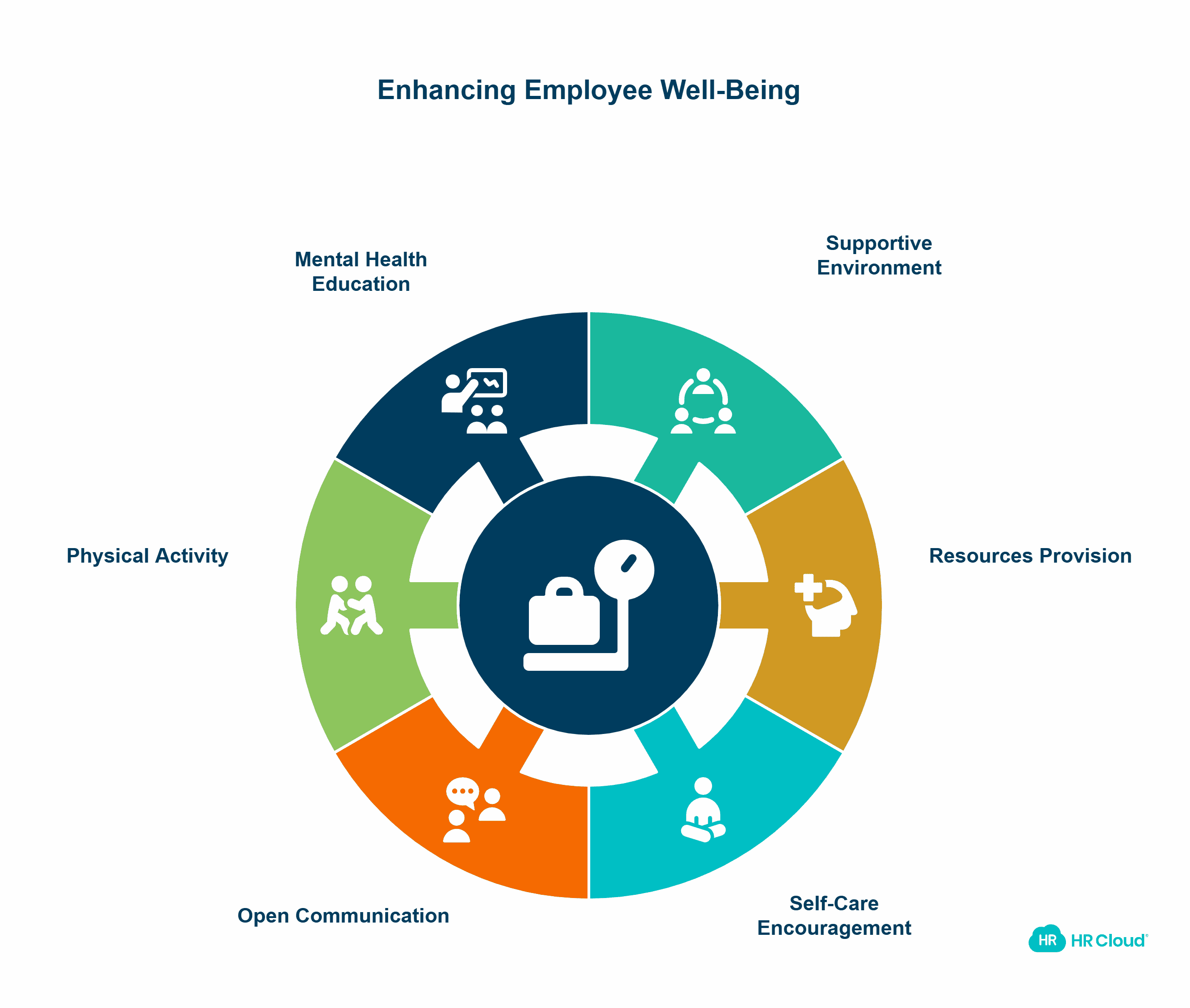
To effectively bridge the communication gaps between your organization and your frontline workers, well-being and mental health are important factors to consider. When you create an environment for employee well-being and mental health, you’ll be able to create an environment that encourages recognition, connection, engagement, and satisfaction among your employees.
Here are some steps that organizations can take to address this issue:
-
Create a supportive work environment: Encourage a positive and supportive work environment that values their well-being and mental health. This includes providing a safe and inclusive workplace, fostering open communication, providing employee feedback, and promoting a healthy work-life balance.
-
Provide resources: Offer resources, such as employee assistance programs, counseling services, and access to mental health resources, to support employee well-being and mental health.
-
Encourage self-care: Encourage your team to prioritize their well-being and mental health, and provide opportunities for them to practice self-care and stress management.
-
Foster a culture of open communication: Foster a culture of open communication, where deskless workers feel comfortable discussing their mental health and well-being, and where there is no stigma associated with seeking support.
-
Promote physical activity: Encourage physical activity, such as regular breaks, stretching, or physical activity programs, to support deskless well-being and mental health.
-
Recognize the importance of mental health: Educate both front-line employees and upper management on the importance of mental health, and promote a culture that values and supports the mental health of every worker.
-
Alignment of Goals and Objectives

An effective strategy to address the communication gaps between your organization and your frontline employees involves ensuring that your goals and objectives are aligned with those of every employee. Here are a few tips that can help you:
-
Clearly articulate the organization's overall goals and objectives, and ensure that both frontline employees and upper management understand how their role fits into these larger goals.
-
Communicate the goals and objectives to the frontline teams and upper management, and ensure that they understand how their work contributes to achieving these goals.
-
Provide the necessary resources, such as training, tools, and technology, to help deskless workers and upper management achieve their goals.
-
Regularly review progress towards the goals and objectives, and make adjustments as needed to ensure that they are aligned and achievable.
-
Conclusion
In conclusion, addressing the communication gaps is crucial for improving organizational performance, employee morale, and customer satisfaction. Whether you’re a manager, leader, executive, or part of the frontline workforce, it’s important to understand the communication gaps between your organization and your frontline workers and make adjustments to bridge the gaps and create an engaging and positive work environment for every worker.
This can be achieved through a combination of effective communication engagement, goal alignment, and a focus on employee well-being, worker recognition, and mental health. By promoting open communication, providing resources, and feedback, encouraging recognition, and fostering a supportive work environment, organizations can bridge the frontline connection gap between front-line employees and upper management and create a more harmonious, productive, and effective workplace. Implementing these strategies can significantly improve employee retention and overall organizational success.
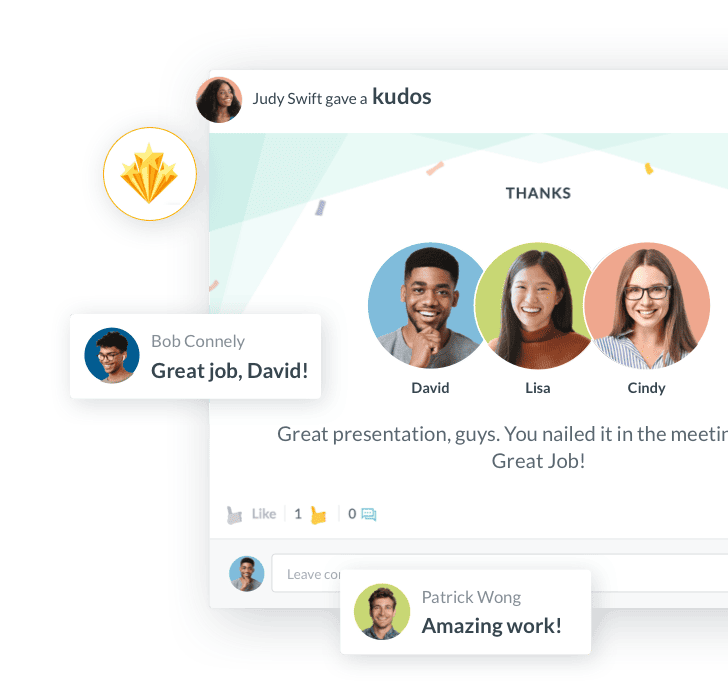
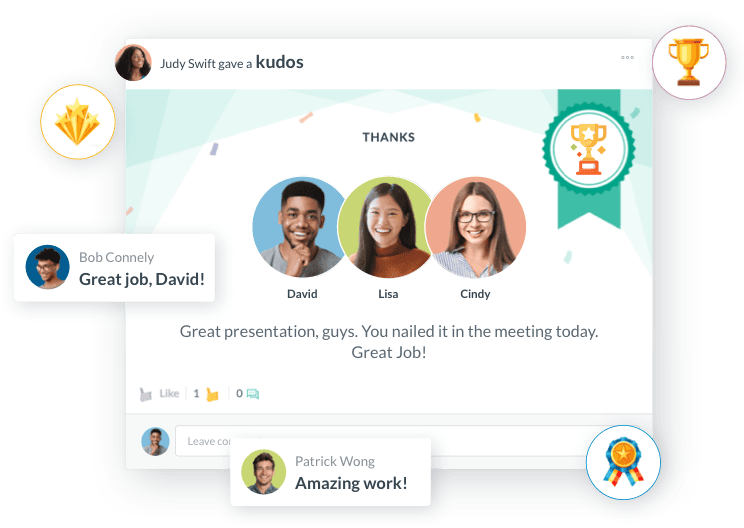
FAQs
1. Why is communication with frontline (deskless) workers critical for organizational success?
Frontline employees are the face of your organization and make up a majority of the workforce. Yet they are often “hard‑to‑reach” due to limited access to email or intranet, leading to disconnection, lower morale, higher turnover, and reduced customer satisfaction.
2. What are the main challenges in communicating with frontline employees?
Common hurdles include:
Poor access to digital channels (e.g. lack of email, weak Wi‑Fi)
Overwhelming or irrelevant messaging (“irrelevant messaging” turns employees off)
Lack of two‑way feedback channels
3. How can technology bridge the communication gap with frontline teams?
Put simply:
Adopt mobile-first internal communications platforms to deliver news, schedules, and policies
Integrate tools like chat, polls, livestreams, and multimedia so messages are relevant, engaging, and accessible
Connect tech with systems like HR, scheduling, and recognition for seamless experience
4. What best practices improve frontline communications?
Effective strategies include:
Defining clear communication goals (e.g., increase retention, foster feedback)
Using multiple channels: mobile, in‑person huddles, chat, digital hubs
Enabling two‑way dialogue via pulse surveys, focus groups, suggestion tools
5. How do you measure and track improvements in frontline communication?
Track metrics like:
Engagement rates (e.g. % opening messages)
Feedback volume, participation in surveys/polls
Employer sentiment (trust, sense of belonging)
A robust employee experience platform can help analyze these trends over time


Keep Reading
Embracing Diversity: Recognizing Different Cultures in the Workplace
Workplaces today reflect the incredible diversity of the world around us. People bring
Employee Engagement Intranet Tools: A Practical Buyer's Guide for 2025
"We improved our communication effectiveness by 40% within the first 90 days of
Best Digital HR Solutions for Workforce Engagement in 2025: Complete Buyer's Guide
Modern workforce engagement software isn't just about surveys and recognition. It's about
Like What You Hear?
We'd love to chat with you more about how HR Cloud® can support your business's HR needs. Book Your Free Demo

Build a Culture of Recognition. Boost Engagement. Guaranteed.
Workmates empowers employees to stay informed, connected, and appreciated—whether they’re on the front line, in the office, or remote. Recognition drives 12x higher engagement.Trusted by industry leaders in every sector




Cut Onboarding Costs by 60%.
Take the confusion and follow-ups out of onboarding with automated workflows, digital forms, and structured portals—so new hires ramp faster 3X quicker.Trusted by industry leaders in every sector




